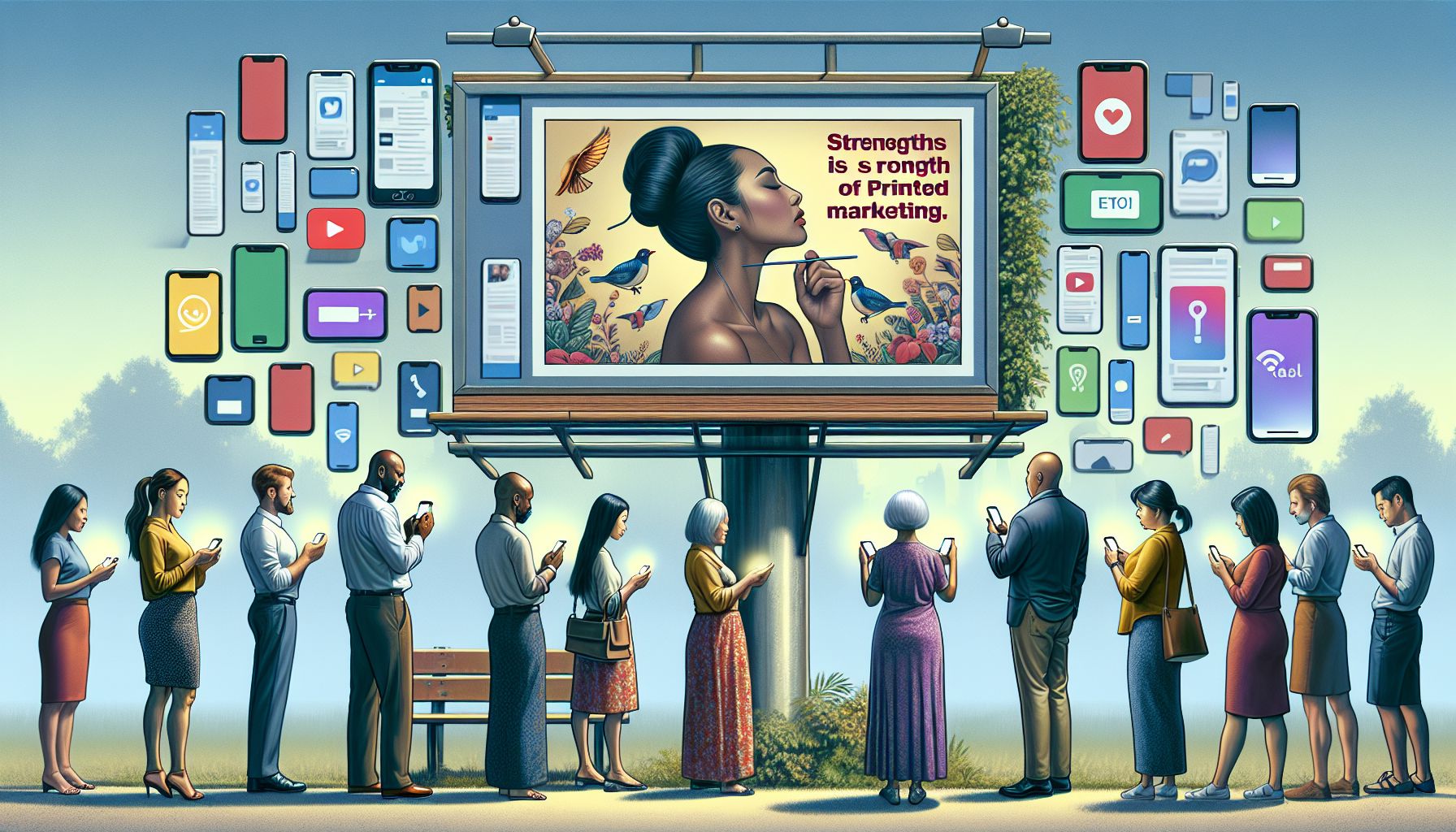In a digital age dominated by social media, email marketing, and pay-per-click advertising, it’s easy to overlook the impact and relevance of printed marketing materials. Many businesses now focus their efforts exclusively on digital channels, believing that traditional advertising has become obsolete. However, printed marketing materials continue to hold their ground and can be a powerful tool to engage customers and grow your business. In this blog post, we will explore the various reasons why printed marketing is still crucial in today’s fast-paced world.
I. Tangibility and Enhanced Engagement
One of the key advantages of printed marketing materials is their tangibility. Unlike digital advertisements that disappear after a quick scroll, printed materials have a physical presence that can attract attention and engage potential customers for a longer duration. A well-designed brochure, flyer, or printed advertisement can captivate individuals, allowing them to spend more time carefully exploring the content, the look, and the feel of your brand. This physical interaction enhances the likelihood of making a lasting impression and fosters a sense of trust and interest in your business.
Moreover, printed marketing materials offer a multi-sensory experience that digital advertising simply cannot match. The texture of the paper, the smell of the ink, and the act of physically flipping through a magazine or catalog all contribute to a deeper level of engagement and create a memorable experience. By leveraging these sensory elements, you can make your brand more tangible and create a lasting emotional connection with your audience.
II. Targeting Specific Audiences
Printed marketing allows you to effectively target specific audiences in a way that digital advertising often fails to achieve. While online ads can be targeted based on general demographic information, printed materials provide an opportunity for hyper-local or niche targeting. For instance, if your business operates in a specific neighborhood or city, distributing flyers or providing inserts in local newspapers can directly reach potential customers in that area.
Additionally, printed marketing materials can be tailored to cater to different market segments. By creating multiple versions of brochures, catalogs, or newsletters, you can speak directly to specific customer profiles or address the unique needs and interests of different demographics. This level of personalization demonstrates that your business understands and values its customers’ diversity, leading to a deeper connection and higher conversion rates.
III. Increased Brand Recognition
Consistent exposure to your brand is vital for long-term success. By incorporating printed marketing materials into your advertising strategy, you can increase brand recognition and keep your business top-of-mind for potential customers. Research has shown that a high-quality, well-designed print piece can leave a more significant and lasting impression on individuals compared to digital ads that are often overlooked or forgotten.
To maximize brand recognition, it is essential to maintain a cohesive visual identity across all your printed materials. Use consistent colors, typography, and design elements, which will help your brand become instantly recognizable to consumers. By making your brand visually memorable, you increase the chances of being remembered and chosen over your competitors.
IV. Credibility and Trustworthiness
In an era where online scams and deceptive advertising are prevalent, printed marketing materials carry a certain level of credibility and trustworthiness. Consumers are generally more cautious when it comes to digital advertising due to the risk of scams or viruses. However, printed materials provide a physical form of communication that is seen as more legitimate and reliable.
Furthermore, the perceived effort and cost associated with producing printed marketing materials imply that your business is established and financially secure. This can help instill confidence in potential customers and make them more likely to consider your products or services. By leveraging the trustworthiness of printed marketing, you can increase the perceived value and credibility of your brand.
V. Longevity and Pass-along Value
Unlike digital ads that can be easily scrolled past or closed, printed marketing materials often have a longer lifespan. A well-designed brochure or catalog may sit on a coffee table for weeks or be shared among friends and family, extending its reach and impact. This longevity gives printed materials a higher chance of making multiple impressions on the same person and reaching a wider audience over time.
Additionally, the pass-along value of printed marketing materials cannot be overlooked. If your promotional materials are captivating and informative, your recipients may be inclined to share them with others or display them in a visible area, such as a bulletin board in the workplace or a fridge magnet at home. This word-of-mouth effect can significantly amplify the reach and effectiveness of your marketing efforts.
Conclusion
While digital marketing is undoubtedly essential in modern business, printed marketing materials remain a powerful and relevant tool for any comprehensive advertising strategy. The tangibility and sensory experience they offer, along with their targeting capabilities, contribute to enhanced engagement and a deep connection with potential customers. Moreover, the credibility, trustworthiness, and long-lasting nature of printed materials provide a unique advantage that digital advertisements often lack.
By combining the strengths of both digital and printed marketing, businesses can leverage the best of both worlds to reach a broader audience and maximize their advertising effectiveness. So, do not underestimate the power of printed marketing. Embrace it as a valuable asset in your marketing toolkit, and unlock the full potential of traditional advertising for the growth and success of your business.
